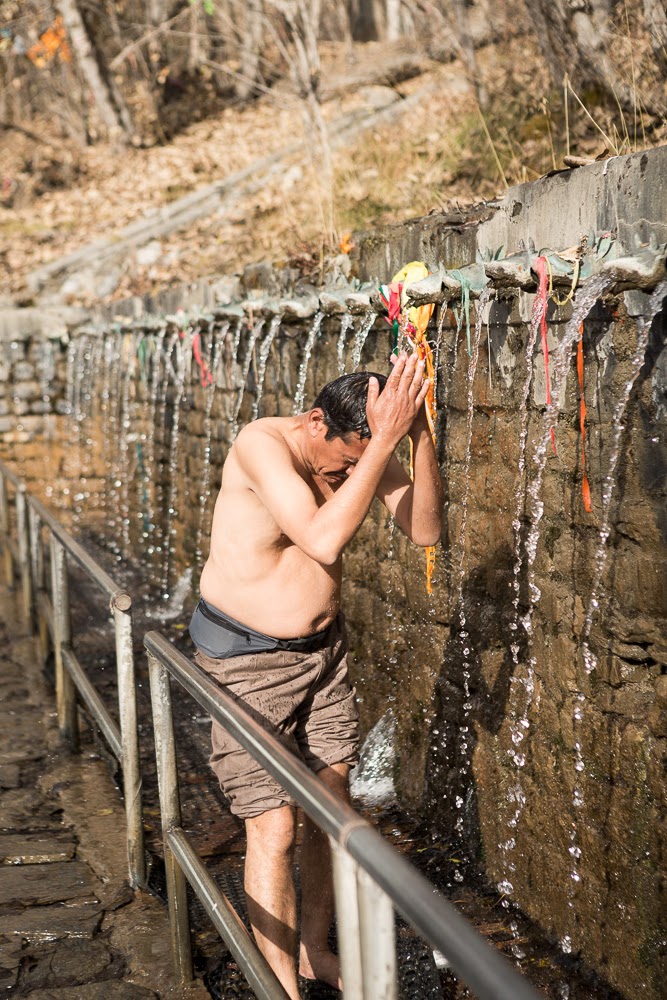 |
| After landing in Jomsom we walked 10 kilometers to Marpha. |
 |
| Early morning reflections in the river gravel ponds. |
 |
| The local people carve prayers into local stones. |
 |
| Animals are a found in the fields and in town. Always good to look where you are walking. |
 |
| The fields and town of Kagbeni run along the river. This historic trading center straddles the old border between the Mustang Kingdom and Nepal. |
 |
| Kagbeni has lots of narrow passageways. |
 |
| There are a few tractors in the mountains but they aren't used to work the fields. Tractors are used to gather rocks and gravel from the rivers. This material is used to build homes and animal pens. |
 |
| This small stream runs up hill toward Muktinath, the last town we will visit in the Annapurna Conservation Area. I found a large snail fossil while walking this stream bed. |
 |
| The mountain in the background is over 20,000 feet tall. |
 |
| Prayer stones around a chorten. |
 |
| One evening I hung out in the river valley to shoot star trails. Unfortunately after about an hour of shooting continuous ten second exposures my lens fogged over. |
 |
| The sun cut spectacular angles of light as it rose behind the peaks. |
 |
| Occasionally you could find a little bit of color in the mountains. |
 |
| Layers of mountains. |
 |
| Small reflection pool. |
 |
| Most of the taller trees have disappeared. |
 |
| The sun light was filtered through yellow leaves casting a colorful glow on this water channel. |
 |
| Doorway to a field of apple trees. |
 |
| I like the pattern of stones and mud. |
 |
| The road to the towns of Jharkot and Muktinath. |
 |
| Early one morning three of us set out to walk to the Dzong Monastery. |
 |
| A little color on the walk. |
 |
| The Monastery is on top of a hill before the mountains. |
 |
 |
| Getting closer |
 |
| The monastery is locating in Dzong which was once a regional capital for this area. |
 |
| Dzong |
 |
| At one time there was a fort next to the monastery. Some of the old mud rammed walls still stand. |
 |
| Fortunately several pedestrian suspension foot bridges were built across the gorges. |
 |
| These switchbacks lead to the Thorung Pass where several trekkers lost their lives just a couple of weeks ago. |
 |
| Small pond reflection with prayer flags. |
 |
| I walked up to this pond to catch early morning reflections. But it was so cold that the pond was iced over. |
 |
| Terraced fields are prevalent in the mountains. |
 |
| Mountains from the roof of a monastery. This is the last blog from Nepal. I hope you enjoyed them. |











































































